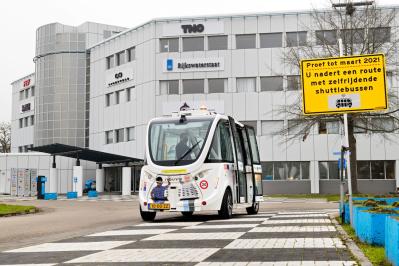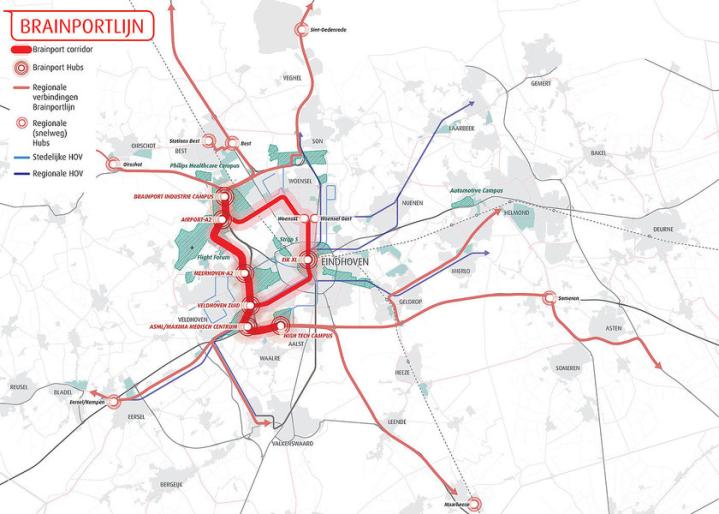Track #3: mobility
Well done! You've taken your first steps on the AI path and now we're going to look at the various applications. We'll start with mobility.
Autonomous buses
Self-driving vehicles may seem a long way off still, but they're closer than you think. For example, did you know that Helmond has been testing driving with autonomous buses as part of a pilot project?
Imagine you have to write an algorithm for a Fabulos bus.
That's to say: you have to give the bus a number of general rules so it can respond appropriately in various traffic situations. Just as a bus driver would do.
Tough, isn't it?
It isn't easy to describe every single situation in which a bus might end up, in a step-by-step plan.Since you can't ever determine everything in rules, AI researchers have started working with 'machine learning'.
Another question...
Let's say you want to use an algorithm with which autonomous buses optimise their energy consumption. It allows the various buses to constantly experiment by evaluating, when they reach the destination, whether they have been successful in saving energy.
Many buses make light work for the data specialist.
Naturally, all the buses at the same time are able to perform many more 'experiments' to optimise energy consumption than the Fabulos team could if they wanted to manually program the best possible driving style for each situation.
Well under way!
In this track, you've learned that autonomous vehicles are coming ever closer, on the one hand, but that there are still some challenges when it comes to complex traffic situations which will keep data specialists occupied for a while longer. The next track will teach you how AI can help in healthcare.

